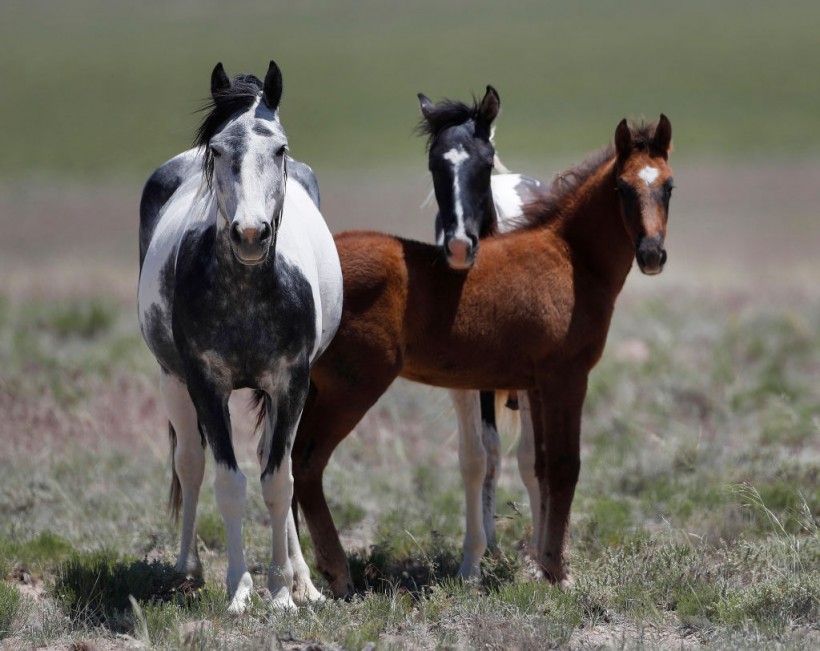In a weird twist to a popular saying, apparently horses can lead themselves to water and make a positive contribution to the local desert ecosystem while they are at it!
At least, that is what some researchers found in a study on equids and the impact of their water foraging habits.

MILFORD, UT - MAY 31: Wild horses roam free on state and some private land, outside federal disengaged horse management areas on May 31, 2017 outside Milford, Utah. The BLM, state officials and ranchers all over the Western United States are struggling with what to do about and how to control the burgeoning horse population in the west.
Horse-dug water challenge invasive species status
The study consisted of the researchers observing a variety of horses and donkeys as they dug wells during the height of the dry, summer period. The pictures taken during the time showed a wide variety of other animals who had been drawn by these hoove-made wells.
Some of these even included thirsty predators, such as black bears and bobcats. These wells continued to be a source of vital hydration even long after the horses moved on. And in extremely hot seasons, this could play a huge difference between the life and death of animals in the surrounding areas.
It also poses a soft challenge to the idea that horses should be treated as an invasive species. Their arrival via European settlers has certainly contributed to more negative changes in America's ecological history, but this research at least shows that they can do some good as well.
The impact of these dug wells can even help combat the effects of global warming in the desert, which has already put a number of other species at risk due to weaker rainfall and harsher heatwaves.
Also read: Domesticated and Wild Horses Remain Connected By Strong Genetic Link
Horses of America - A brief history
It has been said that North America was once in fact home to some of the prehistoric ancestors of today's horses, but this was a long time ago. Back then, most of the continents were held together and these ancient horses either ended up migrating to what is now Europe the few that remained may have likely died off.
This has led some ecologists to see the horse's re-arrival via colonization as some form of foreign introduction, rather than natural.
Still, the specific impact of horses is arguably more positive compared to other invasive species. Native Americans did not use horses at least until the late 17th century. But when they made the animal their own, it had tremendously changed the lives of several tribes (particularly the Plains Tribes). Their mounted speed gave them a better chance hunting prized bison, bettering their lives with meat and hide. They also made travel faster, enabling tribes to communicate and migrate across even greater distances.
This history of the American horse is without a doubt a lot more complex, both in a cultural and scientific sense. They may have been gone from the wilderness for the better part of 10,000 years, but wild horses have already left their mark for at least a good 300. The new research even suggests that colonization may have very well returned these animals to ecosystems that could still use their presence. In any case, there may definitely be a shift in perspective regarding these animals and their role in helping desert wildlife.
Also read: Fossils Of a Horse Carrying Unborn Foal Found In Germany, Study Confirms
© 2024 NatureWorldNews.com All rights reserved. Do not reproduce without permission.





